In the least we see
Everything. In the turning
The Way shows itself.
—D. Malcolm Wells, 2021
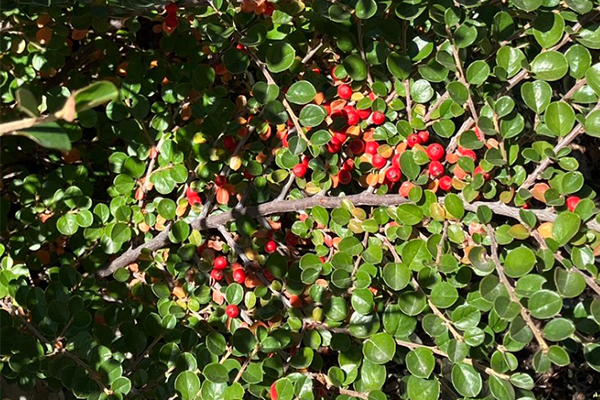
Kinnikinnick – Photo by D. Malcolm Wells
The December 25th date for Christmas is questionable as a “fact.” The Roman world’s Solstice celebration began December 17 and ended on the 25th. This festival was called “Sol Invictus” (Sun Victorious or Unconquerable); also Saturnalia. The substitution was from the Sun to the Son, both unconquerable Lights.
The earliest mention of December 25 as Jesus’ birthday comes from a mid-fourth-century Roman almanac that lists the death dates of various Christian bishops and martyrs. The first date listed, December 25, is marked: natus Christus in Betleem Judeae: “Christ was born in Bethlehem of Judea …
Rituals and festivals take place in the Temenos, the holy space/time/place outside of daily reality and linear time. The linking of Winter Solstice and the birth of the Redeemer/World Healer child meld effortlessly in a timeless realm.
Christmas Eve Mass
In the Episcopal church the Christmas Eve Midnight service is the time the child is born, perhaps at the instant we sing of it, perhaps as we are offered the bread and wine. It is the highest mass of the year, more important than Easter, for without the birth there is no resurrection. We dress for it. I remember my father driving our car, my grandfather sitting shot-gun, both wearing brushed, dark suits with wool overcoats, crisply ironed white shirts, sedate Christmas ties, shoes polished to a military sheen. My Scottish grandmother and mother sat behind their husbands in the car, long dresses sparkling in the passing lights. As a child I sat in the middle, and snuggled against my mother’s fur coat, her rose perfume in the air between us.
My husband and I wear the tartan of our clans, full dress, honoring those times when our ancestors attended with only a tiny piece of their tartan squeezed between their thumb and second finger, forbidden by the English overlords from wearing it. The pin that holds my long scarf to my shoulder belonged to my great grandmother, and has stones in it from the farm in Ayr she left to come to the new world. There is a sense that as we take our places they are there with us, aware and grateful for our commitment to continue their traditions. Our priest said once the whole communion gathers at the altar, we on this side, they on theirs. “I was, I am, I will be” – all at the same instant of relative time.

Photo by Shripal Daphtary on Unsplash
The Evergreen Tree
By nature of being ever green the tree is a symbol of a life that is also ever green, ever alive. In the Samhain ceremonies of naming the dead, a sprig of evergreen is put in the bonfire, and Masons drop it into the grave. It is a beautiful evolution to bring an evergreen tree into the house at Christmas, for it is by the birth of the Christ Child that human kind is redeemed and offered eternal life.
In medieval times December 24th was Adam and Eve day, and a legend from that time tells how Adam and Eve took a cutting from the Tree of Knowledge of Good and Evil when they left the Garden of Eden. From that cutting grew a tree, which bore fruit that grew into another tree, until the last tree was taken for the cross on which Christ died. Jesus is associated with the vertical tree; he comes down from heaven, is hung on the tree to die, descends into hell for three days before rising again and soon returning to his Father’s home. He, like Odin of the Norse, and Inanna of the Sumerians, hangs on the tree to save the people of Middle Earth.
We, those people, live in the horizontal, round world. At Christmas time we often travel to be together with those closest to us, often decorating the evergreen tree together, or sitting beside it as they share the events of their lives. The circle on the Celtic Cross is not only the Sun, joined to the Son. It also represents the hoop of the creatures of the world, including us, who gather to bear witness to the birth of the Christ Child.
Holly, Mistletoe and Ivy
Three plants that come to us from ancient times in this season are the mistletoe, the holly and the ivy. Old carols tell us how the holly’s blossoms are white as the lilies of Mary, and its berries are red as her son’s blood shed for us. In the old traditions the holly is masculine and the ivy feminine. Holly is “holen” or holy in Saxon, and identified with Robin (red breast) and the ivy with Wren (white).
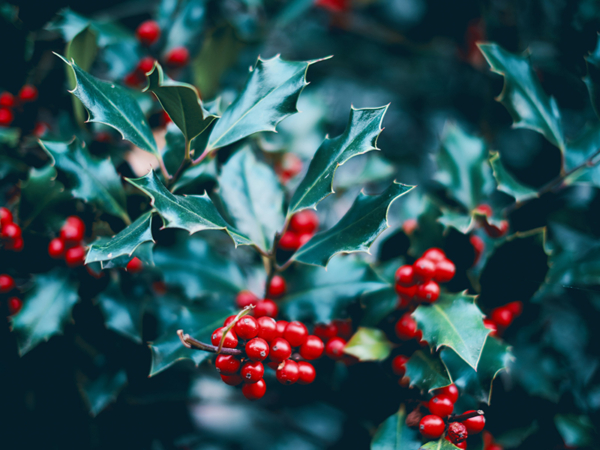
Photo by Thomas Millot on Unsplash
There is no Christmas holly in the Rockies where I grew up. Instead we used kinnikinnic, pictured in the top image. It is also called uva-ursi or bearberry and for knowledgeable people it has many medicinal uses.
Mistletoe
The mistletoe was called “heal all” by the Druids, who believed it a fertility drug and an antidote to poisons. William Stukeley, of the eighteenth century in England, tells us mistletoe was carried to the high altar of York Minster on Christmas Eve, and at the gates of the city a “universal pardon” was extended to those in need of it. A kiss is given to any person standing under a mistletoe branch hung in a central location in the house. In some places a berry is removed for each kiss until all are gone. A “kissing bunch” is made by putting hoops together, often wrapped in yarn or leather, and placing the mistletoe in the center before it’s hung. Ribbon streamers hanging from the kissing bunch might have candies, fruits, small gifts, figures from the Nativity story, one to be taken away by each once a kiss is exchanged.
Traditional Foods
Mincemeat
The meat harvested in October or early November was prepared for winter. Some was hung and used before drying out. There was no refrigeration except ice, which needed to be replaced, usually in blocks cut from local sources of frozen water (lakes, ponds, wide places in the river). Pickling was another preserving method. Mincemeat used ground meat, dried fall berries, pieces cut from apples imperfect for storing, apple cider or juice, and spices. Placed in a crock, it fermented until Christmastide and was served when other meat was no longer available. Here’s our family’s traditional recipe, courtesy of Aunt Eliza Banks, Baggs and then Saratoga, Wyoming.
Mincemeat
2 pounds cooked venison, elk or buffalo (chunks or burger)
1 lb currents, dried berries
4 lbs apple pieces
Raisins or dates to taste if you have them
¾ pound suet (or butter 2 cubes max)
2 lbs brown sugar
2 tsp salt
½ tsp each nutmeg, cloves
1 tsp mace
1 ½ tsps cinnamon
Cover with:
½ cup of vinegar
Cider or apple juice (cider has more tang which may or may not be desirable to your family)
Make mixture, cover with vinegar and cider. Some people add brandy.
Cook SLOWLY one hour.
Can, rack in hot jars or put in tightly covered crock in cool cellar to keep
Bring out at Christmastide
Note: Since I have refrigeration I freeze some of it pie pans for mincemeat pies for Christmastide dinners. Once it’s frozen it stores without the pie pans. All you do is make the pie dough, line the pan, put in the frozen mixture, cover with latticed dough, and bake on a cookie tin to catch any spills. I also use it to make mincemeat handheld pies, similar to a pasty but round.
Fruitcake
The fruitcake of old was full of dried fall fruits and nuts, and rich in butter and eggs. It was soaked with port wine and kept in tight tins. It tasted more like a rich bread than a cake and was eaten as such.
Christmas Cookies
The base of decorated Christmas Cookies is your best white flour sugar cookie. We use Christmas themed cookie cutters, cut and bake the cookies. They can be covered in powder sugar icing, or use egg yolk paint. We used egg yolk paint and baked the cookies with a metal tree hanger at the top. Once they were cooled and painted they were hung on the Christmas tree and hallway greens. We ate them off the tree; after a couple of days they have to be “dunked” in cocoa, tea or coffee.
Egg Yolk Paint
2 egg yolks
2 tsp vinegar
2 tsp water
Food coloring
Beat yolks, vinegar and water together, divide into four cups. Add the food coloring.
If the paint thickens add a drop or two of water. Paint both sides of the cookie. Double for a large tree.
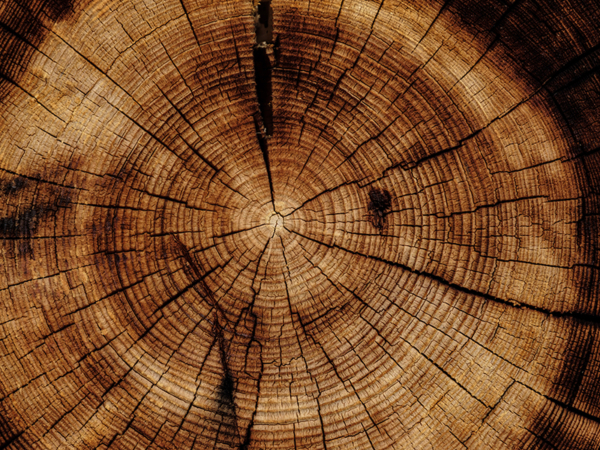
Photo by Joel Jasmin Forestbird on Unsplash
The Yule Log
The Yule Log arises from the traditional bonfires lit at Winter Solstice to call the sun back. A large dry log, perhaps selected the year before, is burned throughout the evening of the 24th, all day on the 25th, and then lit again each night until Twelfth Night. The word Yule probably comes from the Saxon word “hweol” or wheel, and points to the wheel of the year turned at Solstice.
This is not an ordinary log. In the Celtic world trees are the basis for many things, from calendar to alphabet. Traditions are attached to the holly and the oak – most holy trees! – as well as many others. The log is dressed in red ribbons, ivy, and red and white flowers.
The log is brought into the house on Christmas Eve, carrying it three times around the rooms. As it passes by people they sprinkle it with water or wine and welcome it into the house saying “Hail, Yule” or “Joy enters.” Finally the log is carried to the fire pit – it may be a fireplace in the home or a fire pit dug outside away from brush and trees, with gravel around to protect. The eldest in the house recognizes the Yule Log by saying:
Hail, Bright Yule,
Many thanks for coming to us.
Warm this house with your light.
Lighten our souls with your warmth.
When the log is placed in the fire pit, and kindled, every one shouts “Burn the Log, O Fire!”
Tending the log takes skill as it must last until Epiphany (January 6th) and yet burn so that only a fragment is left to take from the fire. The fragment is kept as a lucky piece until the next Yule’s log’s fire consumes it as kindling, yet another marker of how life is reborn as the cycles turn.
In the United States slaves were given seven days rest around Christmas, and the days were measured by the burning of a log. The slaves would soak it with water to keep it burning longer. Holly was thrown on the fire to burn up the troubles of the old year.
If a Yule Log is impractical, substitute a large white candle and do the ritual. Yule candles are often given as gifts.
Kindle the Christmas brand, and then
Till sunset let it burn.
When quenched lay it up again
Till Christmastide return.
Part must be kept to tend
The Christmas log next year;
And where ‘tis safely kept, the Fiend
Can do no mischief there.
—Robert Herrick
Braiding Circles of Time
It is we, the current generation, whose hands and heart braid time. What was, is. What is, will be. What will be, was. When we prepare and practice a tradition we place the hands of young in the hands of our ancestors. Their cycle of time unites with the present and weaves the future. Remember. Turn the wheel.
Our earth is modulating to the destruction of the Anthropocene. Some few of us seek to go to the moon, Mars, the stars. Far more of us take up the tasks and tools to heal what they can, to give a chance of passage from the old ways to the new for all that can be saved. To braid time we must hold the strands – the traditions, the stories, the facts, the lies, the hopes, the fears and anxieties – given to us. We choose what to weave. Our lives braid what was before to what will be after. “Be not afraid,” the angels say over and over again.
Please at this Yule take time to choose which traditions you will weave this year. Send an email or, better, share yours with all in the Comments section below. And if this blog will appeal to others you know, please send it on to them.
Questions:
And you, what strands do you hold in your heart and hands?
What traditions do you carry on, what new ways do you practice?
Can you embrace yourself as a Braider of Time?

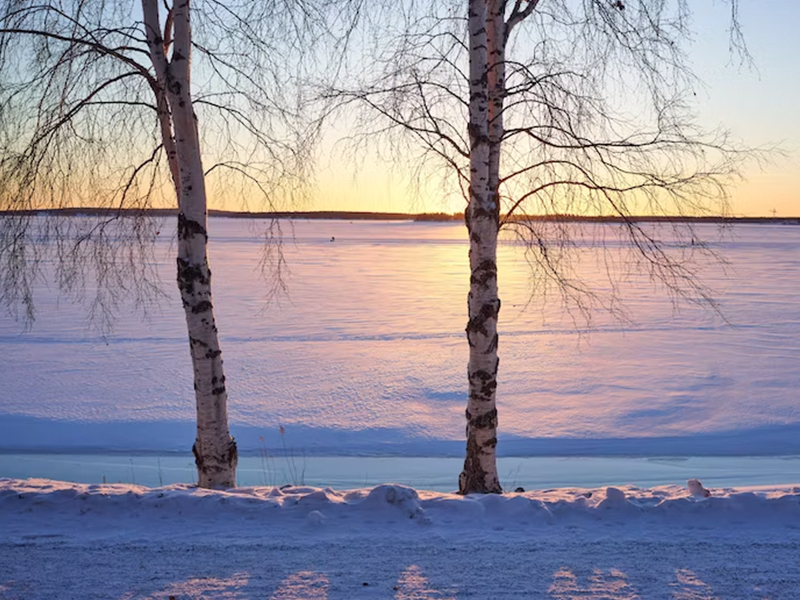
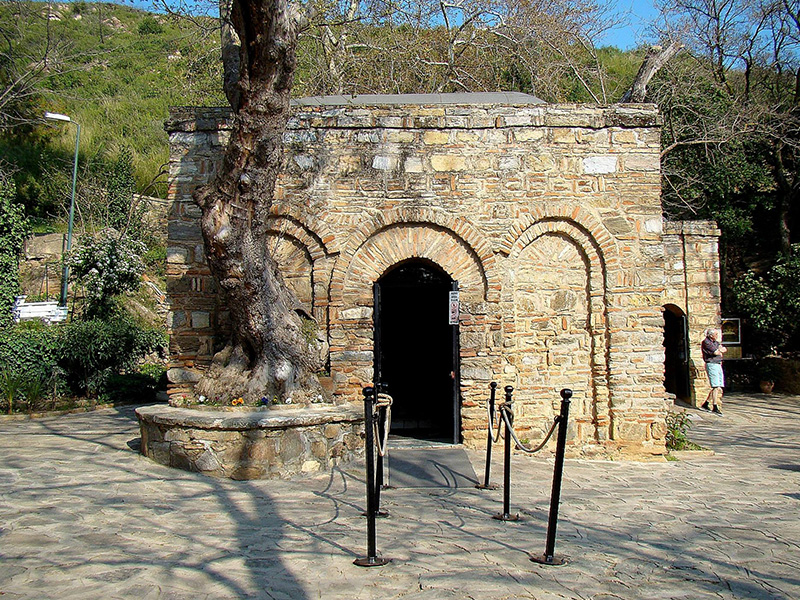
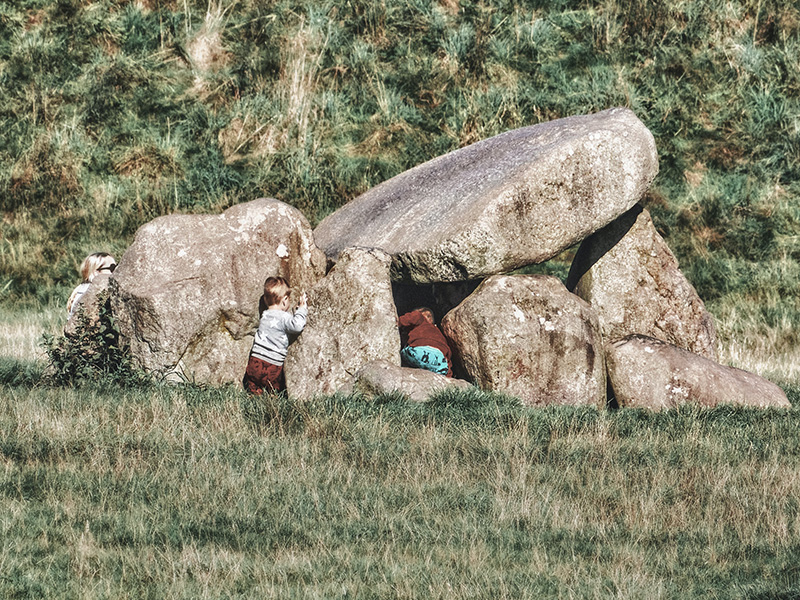

Wonderful Lola, thank you and blessings to all your family this dark night